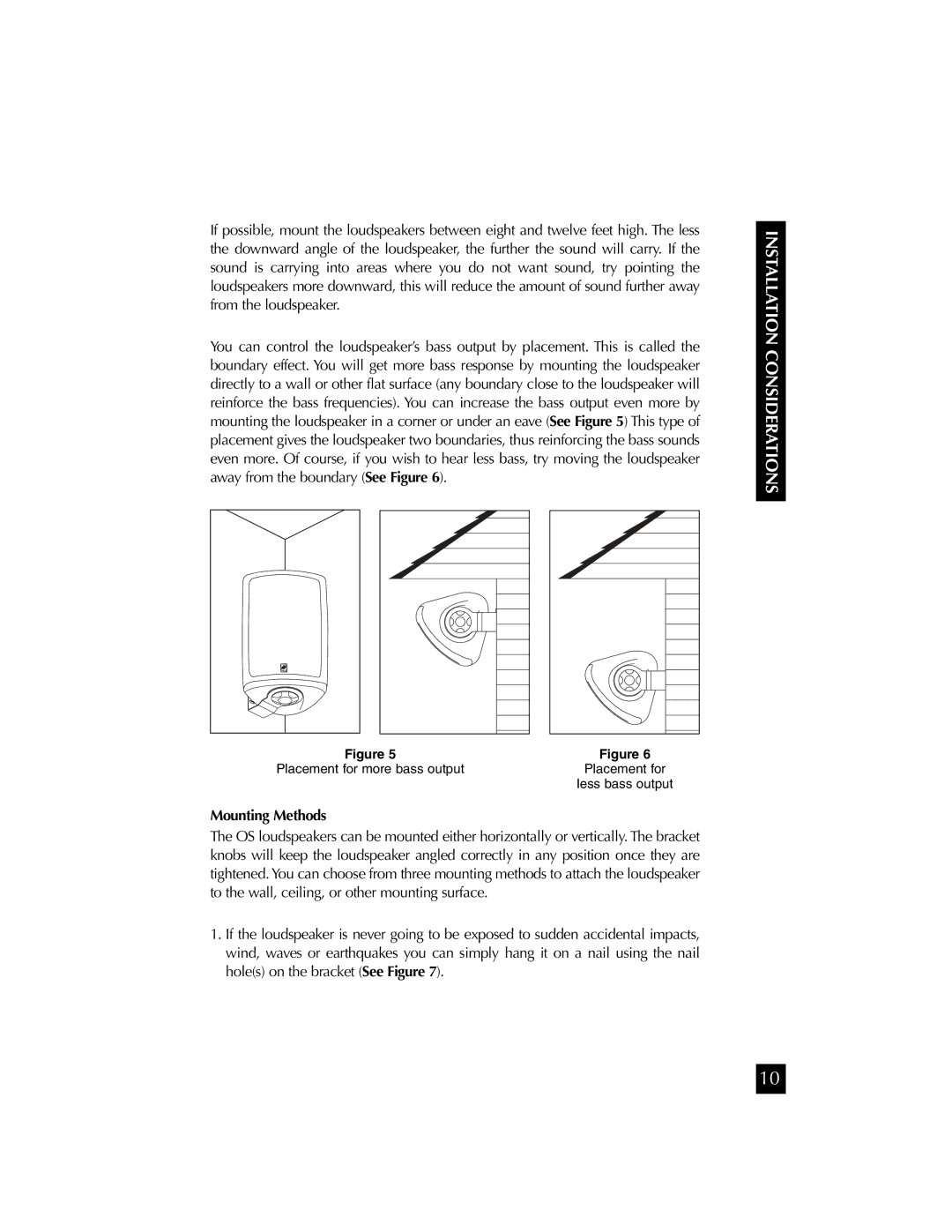OS7.5 specifications
Niles Audio OS7.5 is a premium outdoor loudspeaker designed to deliver high-fidelity sound in outdoor settings. Engineered for all-weather performance, the OS7.5 is particularly well-suited for patios, gardens, poolsides, and other outdoor entertainment areas. With an emphasis on durability and sound quality, this speaker has quickly gained recognition among audio enthusiasts and homeowners alike.One of the standout features of the Niles Audio OS7.5 is its robust construction. The speaker enclosure is made from high-quality, UV-resistant materials that not only protect the speaker from harsh sunlight but also resist fading over time. Additionally, the OS7.5 is designed to withstand moisture and can handle rain showers without compromising performance, making it an ideal choice for year-round outdoor use.
In terms of sound characteristics, the OS7.5 boasts a two-way design that includes a powerful 7.5-inch polypropylene woofer and a 1-inch polymer dome tweeter. This configuration allows for a wide frequency response, ensuring that both low and high frequencies are well represented. With a frequency response range from 45 Hz to 20 kHz, this speaker delivers rich, full-bodied sound that can easily fill outdoor spaces.
The OS7.5 is equipped with advanced technologies that enhance its audio performance. The speaker features a high-efficiency crossover that ensures seamless integration between the woofer and tweeter, resulting in clear and detailed sound reproduction. Additionally, the speaker's design minimizes distortion, allowing for louder volume levels without losing clarity.
For easy installation, the OS7.5 includes versatile mounting options. It comes with a sturdy bracket system that allows users to securely attach the speaker to walls, ceilings, or posts, providing flexibility in positioning for optimal sound coverage. The speaker is also available in a variety of colors that can seamlessly blend into outdoor environments.
With its combination of durability, high-quality sound, and versatile installation options, the Niles Audio OS7.5 stands out as a top choice for anyone looking to enhance their outdoor audio experience. Whether for casual listening or hosting gatherings, this speaker offers a premium solution for enjoying music and entertainment outside.

